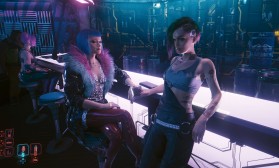Do JRPGs with Individual Character Focus Have More Customization Than Fire Emblem?
The Japanese role-playing game (JRPG) genre is renowned for its rich storytelling, intricate worlds, and deep character development. Among its many subgenres, two distinct approaches stand out: games with a strong individual character focus, such as the Tales or Final Fantasy series, and tactical RPGs like Fire Emblem. While both emphasize narrative and strategic gameplay, they diverge significantly in how they handle character customization. This raises an important question: do JRPGs with an individual character focus offer more customization than Fire Emblem? To answer this, we must explore the nature of customization in both styles, examining aspects like character progression, equipment, narrative influence, and strategic flexibility.
Understanding Customization in JRPGs
Customization in JRPGs typically refers to the player’s ability to shape characters' abilities, roles, aesthetics, and sometimes even narrative outcomes. In games with an individual character focus, such as Final Fantasy VII or Tales of Berseria, the protagonist and their companions are often deeply personalized through:
-
Skill and Ability Systems: Many character-focused JRPGs employ systems that allow players to tailor abilities to their preferences. For example, the Materia system in Final Fantasy VII lets players mix and match magical orbs to create unique skill sets for each character. Similarly, the Artes system in the Tales series allows players to prioritize certain combat techniques, effectively defining a character’s role in battle.
-
Equipment and Aesthetics: Games like Xenoblade Chronicles or Persona 5 offer extensive equipment options, not just for stats but also for visual customization. Outfits, weapons, and accessories can often be swapped to reflect player preference, enhancing immersion.
-
Narrative Choices: In some JRPGs, player decisions influence character relationships or story arcs. Titles like Persona 5 use social sim elements to deepen bonds with party members, unlocking new abilities and altering narrative outcomes.
-
Class Systems: While not universal, some JRPGs feature flexible class systems. Bravely Default and Final Fantasy V, for instance, allow characters to switch jobs, enabling highly customized party compositions.
These elements emphasize individuality, allowing players to invest in characters as distinct entities with unique potentials.
Customization in Fire Emblem
Fire Emblem, a flagship tactical JRPG series, approaches customization differently. Its focus is on army management and large-scale strategy rather than individual protagonist depth. Key customization aspects include:
-
Class Change and Promotion: Most Fire Emblem games allow units to promote into advanced classes, often with branching paths. For example, Fire Emblem: Three Houses lets players reclass units into various roles (e.g., Mercenary, Mage, Archer), providing strategic diversity.
-
Skill Inheritance and Growth: Modern entries like Fire Emblem: Awakening and Fates introduce skill systems where units inherit abilities from their classes or parents. This adds a layer of planning, as players can create specialized units for specific roles.
-
Equipment and Weapons: While equipment options exist, they are generally more limited than in traditional JRPGs. Weapons have durability and type restrictions, and customization often revolves around forging and refining rather than visual changes.
-
Relationship Building: Support conversations and pairings affect unit performance in battle, unlocking synergies and stat bonuses. However, these are less about narrative branching and more about tactical optimization.
-
Permadeath and Unit Management: The presence of permadeath (in classic mode) forces players to customize their army dynamically, replacing lost units with new ones and adapting strategies accordingly.
Despite these features, Fire Emblem’s customization is primarily functional rather than personal. The goal is to build an efficient army, not necessarily to develop deeply individualized characters.
Comparing Depth and Flexibility
At first glance, character-focused JRPGs seem to offer more customization. Their systems are often more granular, allowing players to tweak everything from stats and abilities to appearance and story impact. For example, in Persona 5, players customize the protagonist’s daily activities, social links, equipment, and combat skills—a level of personalization unmatched by Fire Emblem.
However, Fire Emblem excels in strategic customization. The ability to reclass units, combine skills, and manage army composition offers a different kind of depth. In Three Houses, players can train units in specific weapons or magic, creating unique builds that suit their tactical preferences. This macro-level customization is less about individual expression and more about solving strategic puzzles.

Another key difference is narrative influence. While Fire Emblem games like Three Houses feature branching storylines based on player choices, the individual characters’ arcs are generally fixed. In contrast, JRPGs like Dragon Age (though Western, it shares JRPG elements) or Star Ocean allow players to influence companion stories through choices, romance options, or side quests.
The Role of Game Design Philosophy
The disparity in customization stems from each genre’s design priorities. Character-focused JRPGs are built around the hero’s journey, emphasizing personal growth and identity. Customization systems reflect this, enabling players to project themselves onto the protagonist or curate their party’s development.
Fire Emblem, as a tactical series, prioritizes ensemble casts and battlefield strategy. Customization serves to enhance replayability and strategic variety. Units are often interchangeable tools in a larger machine, and while fans grow attached to them, the systems are designed for optimization rather than role-playing.
Conclusion
So, do JRPGs with an individual character focus have more customization than Fire Emblem? The answer is nuanced. In terms of personalization—abilities, aesthetics, and narrative agency—character-driven JRPGs undoubtedly offer more. Players can craft unique identities for their party members, influence story outcomes, and engage with complex progression systems.
However, Fire Emblem provides deeper strategic customization, allowing players to experiment with army composition, class combinations, and tactical synergies. Its customization is broader in scope but less intimate.
Ultimately, the preference depends on what players value: the personal connection and detailed tailoring of character-focused JRPGs or the strategic depth and replayability of Fire Emblem. Both approaches celebrate customization in their own right, reflecting the diverse ways JRPGs engage their audiences.














